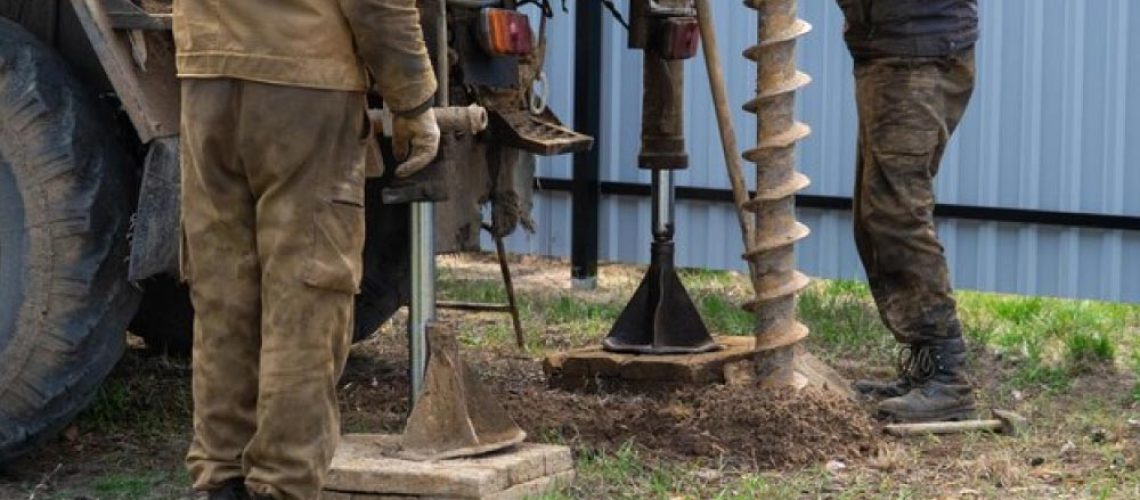Have you ever wondered how experts in various industries gain access to the resources deep within the earth? Drilling is one of the primary techniques used to penetrate layers of soil and rock.
Before delving into drilling techniques, it is important to understand what drilling is and how it has evolved over time.
Definition of Drilling
Drilling is the process of creating a hole in the surface of the earth or other materials using specialized tools. This method is used in various applications, ranging from the exploration of natural resources such as oil, gas, and minerals, to infrastructure development needs.
From ancient times to the modern era, drilling techniques have evolved rapidly. Initially, drilling was carried out manually with simple tools. With the advancement of technology, new methods that are more efficient and precise emerged. From traditional drilling that relied on human and animal power, we now have advanced methods such as laser drilling and CNC drilling.
Conventional Drilling Methods
Conventional drilling methods form the foundation of all modern drilling techniques. Although simple, this method is still widely used due to its reliability and relatively low cost.
Rotary Drilling
Rotary drilling is one of the most common techniques used to drill holes in the ground. This method uses a drill bit that rotates at high speed, enabling it to cut through rock. The advantage of this method is its ability to reach great depths with good efficiency.
Diamond Drilling
Diamond drilling is a technique that uses a drill bit coated with diamonds. This method is ideal for very hard materials, such as granite or metamorphic rock. Its main advantage is producing an excellent core sample, allowing detailed geological data to be obtained.
Percussion Drilling
Percussion drilling works by repeatedly striking the drill bit against the rock surface. This technique is very effective for brittle or cracked materials. Although it may be slower than rotary methods, its advantage is the ability to drill through heterogeneous materials.
Modern Drilling Methods
With technological advancements, modern drilling methods have changed the paradigm in the drilling industry. Advanced technology enables faster, more precise drilling processes with minimal risk of error.
CNC Drilling Technology
CNC (Computer Numerical Control) has revolutionized the manufacturing world, including the field of drilling. CNC machines are capable of drilling with high accuracy, making them very suitable for jobs that require tight tolerances. With the help of computers, drilling parameters can be automatically controlled to achieve optimal results.
Laser Drilling
Laser technology in drilling provides a solution for very fragile or sensitive materials. By using focused laser energy, drilling can be performed without direct contact with the material. This technique is not only precise but also reduces the risk of damage to surrounding materials.
Ultrasonic Drilling
Ultrasonic drilling is an innovative method that utilizes high-frequency vibrations to aid the drilling process. This technology allows for more efficient cutting of materials, especially those that are hard and complex. Additionally, this method also reduces friction and heat generated during the drilling process.
Factors in Choosing a Drilling Method
Not all drilling methods are suitable for every condition. The choice of the right method depends on several important factors.
Type of Material Being Worked On
One of the main factors in selecting a drilling method is the type of material to be worked on. Hard materials such as granite require a strong and precise drilling method, while softer materials can be handled with simpler methods. Understanding the characteristics of the material is crucial to ensure that the chosen method produces an optimally quality hole.
Depth and Size of the Hole
The depth of the hole and the desired size also influence the choice of drilling method. For deep and narrow holes, techniques that can maintain the stability of the hole walls to prevent collapse are required. Conversely, wider holes may require equipment with greater capacity and different techniques.
Advantages and Disadvantages of Each Method
Each drilling method has its own advantages and disadvantages. Understanding these will help in determining which technique is most suitable for a particular project.
Advantages of Conventional Drilling
Conventional drilling methods have proven to be reliable and easily accessible. Some of their main advantages are:
Cost and Equipment Availability
One of the main reasons why conventional methods are still popular is their relatively low cost and the widespread availability of equipment. This makes the method the primary choice for many projects, especially in areas with limited infrastructure.
Advantages of Modern Drilling
Modern methods offer speed and precision that cannot be matched by traditional techniques. With advanced technology, drilling results become more accurate and efficient.
Speed and Precision
The speed of execution and the precision of the drilling results are the main advantages of modern methods. The use of technologies such as CNC, laser, and ultrasonic allows the drilling process to proceed more quickly with minimal error rates. This is especially important for large projects that demand time efficiency and high quality.
Applications of Drilling in Various Industries
Drilling is not only important in the mining sector but also has wide applications in various industries.
Mining Industry
In the mining industry, drilling is used for the exploration and extraction of minerals. The drilling process allows geologists to obtain core samples necessary for further analysis. The information obtained from these samples helps in determining the optimal mining location.
Construction Industry
In the construction sector, drilling plays an important role in building foundations, installing piles, and excavating for underground infrastructure. The right drilling method can ensure the stability and strength of a building’s structure, thereby increasing both its safety and lifespan.
Oil and Gas Industry
Drilling is vital in the oil and gas industry. By using the appropriate drilling techniques, companies can reach oil or gas reservoirs located deep beneath the earth’s surface. Modern drilling technology also helps reduce the risk of accidents and environmental impacts that may occur during the extraction process.
Challenges and Solutions in Drilling
Each drilling method has its own challenges that need to be overcome to ensure smooth operations.
Technical Issues
Technical issues such as equipment wear, excessive friction, and vibration control are challenges often faced in drilling. Routine maintenance and the use of advanced technology are effective solutions to overcome these issues. Additionally, training for operators is very important so they can quickly identify and resolve technical problems.
Environmental Constraints
Drilling can cause environmental impacts such as noise pollution, dust, and vibrations that could potentially damage ecosystems around the drilling site. To minimize these impacts, the implementation of strict environmental standards and the use of environmentally friendly drilling methods is highly recommended. Modern technology that reduces emissions and manages waste also plays an important role in addressing environmental constraints.
Conclusion
From the discussion above, it is clear that drilling methods play a very vital role in various industrial sectors. Ranging from conventional methods that are still relevant to modern technologies that offer high speed and precision, each technique has its own advantages and challenges.
The selection of the appropriate method greatly depends on the type of material, depth, and overall project needs. Innovation and technological advancements continue to drive efficiency and sustainability in the drilling industry, so in the future we may see new breakthroughs that further optimize this process. By understanding the characteristics of each method, professionals can make more precise and strategic decisions for every drilling project.

